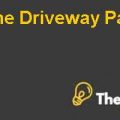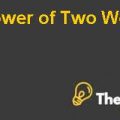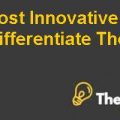AN ANALYSIS – DISRUPTIVE V/S INNOVATIVE DELIEMMA Case Solution
Innovation and disruption are similar in a way that they are both makers and builders. Disruption
tends to uproot and changes how we think, do business, learn and go about our day-to-day routine.
The books “disruptive dilemma” and “the innovation dilemma”illustrate the disagreement of the authors on the adherence of technology in the business.
Christensen a Harvard University professor suggested that sustaining technologies are different from disruptive technologies.Therefore, the organization needs to adapt to disruptive technologies however, it should not let the technology overpower the organization. He further suggested that there is a need of discovery planning approach for the managers to follow since the current markets are continually changing and emerging,thus the new entrant might not be a threat in present,but may affect the business plan negatively.
He further suggested that disruptive technologies can cause problems as they do not identify and satisfy the initial needs of the high-end market.This is why companies overlook the essence and graveness of the disruptive technology and with time, the disruptive technology would takeover the sustainable technology and the companies which would not analyze the disruptive technology would lag behind the new entrants.Moreover, according to Christensen, large companies do not and cannot switch to disruptive technology immediately after they enter the market as they need heavy amount of capital to invest in disruptive technology given the large business plan,as having different Sbus and such a large business plan would hinder the company in addressing the new competition.Furthermore,large companies do not take the disruptive technology in to account as the new entrants are usually weak in the market in the company.
On the other hand, Gans, the professor of university of Toronto, greatly criticized the concept of innovation dilemma, which Christensen proposed.Moreover, he stated that technology is not bad for the company, and that there is need of continuously evolving and making the business plan to best fit with the needs of the customers along with the demand of the market. He further stated that managers should stay vigilant of any threats however,there is a need of in-depth analysis, which could help identify the potential threat for the business. He contradicted with the theory presented by Christensen that it is not because of disruptive technology that the businesses collapse, but itis due to the inability to detect which threat or disruptive technology may harm the business. He supported the fact with the example of Canon and Fujifilm, which became successful due to the adaption of disruptive technology.
Unlike Christensen, Gans identified two types of disruptive technology.
Demand-side where successful businesses underestimate innovations that change what the customers want and fail to cope with the shift in demand.
Supply-side is where the companies that are more focused towards their sustainable technologies are unable to devise and adopt new technology, since they do not have the advantage that can anchor them in the emerging markets.
According to Christensen, disruptive technology is an inevitable and an imminent phenomenon which a company cannot encounter and as a result, the said company incurs loss. Along with this, Christensen proposed a solution regarding how to maintain sustainable technology in accordance with the new entrant’s disruptive technology. On the other hand,Gans suggested that disruptive technology is not an inevitable phenomenon,and that the company can deal with it by correct allocating weight to different threats as well as the company can identify the potential threat.Furthermore, he also suggested that the company should consider the option of being proactive or reactive according to the need of the demand-supply side of disruption.
In addition to this,Christensen took disruptive technology as an un-dramatic technology, which hindered the company due to inadequate knowledge of the managers,whereas GANS suggested that disruptive technology is a breakthrough technology.
The comparison of both the professors can be seen under the example of BLOCKBUSTER and NETFLIX
According to Gans,Broadcast failed to analyze the changing needs and demands of the customers and feared the fact of cannibalizing its own business, whichled Netflix to become successful which,at the entry level, had the same business model as Broad,none the lessit analyzed the change in the demand side of the disruptive technology and reshaped itself while Broadcast adopted the sustainable technology technique which led it towards failure..................
This is just a sample partial case solution. Please place the order on the website to order your own originally done case solution.










